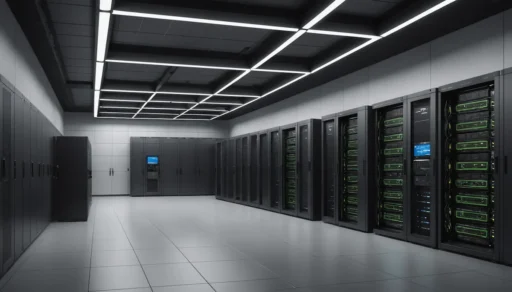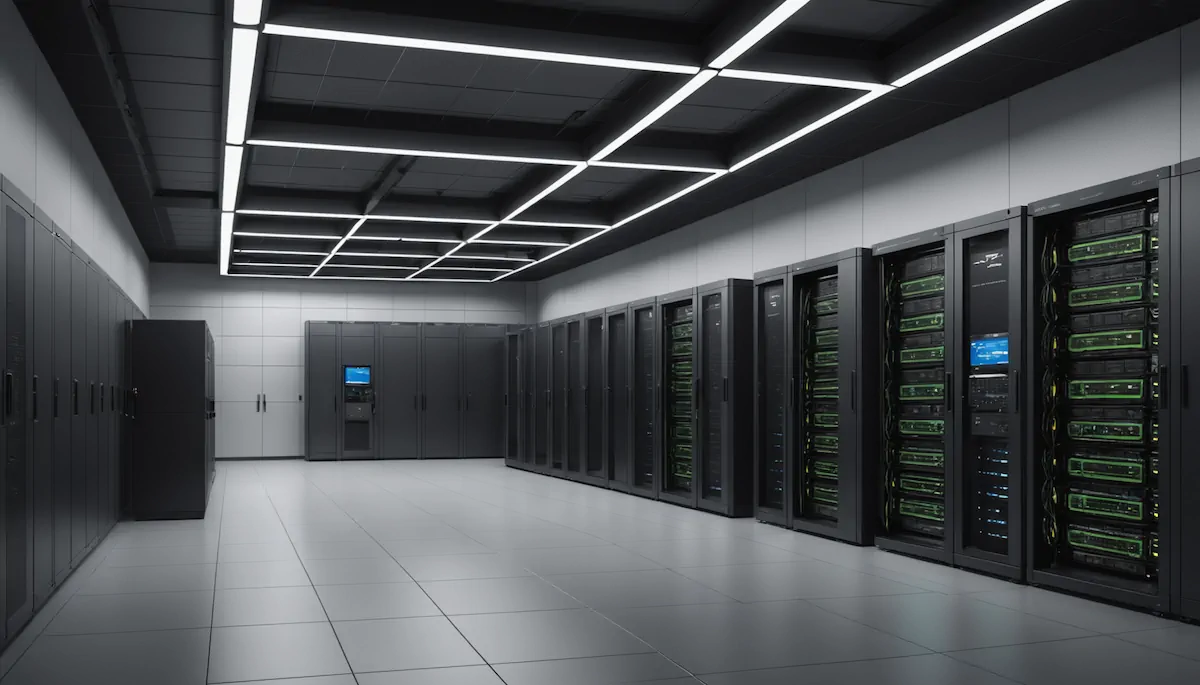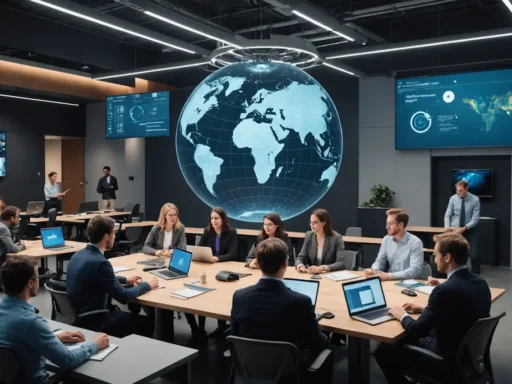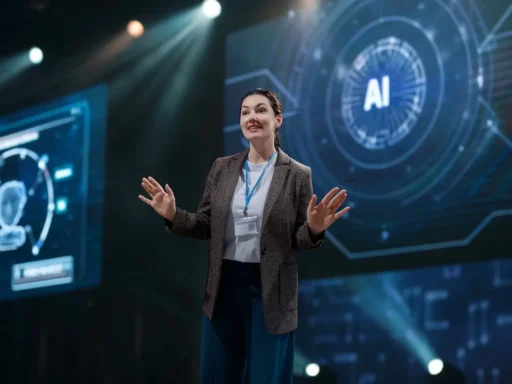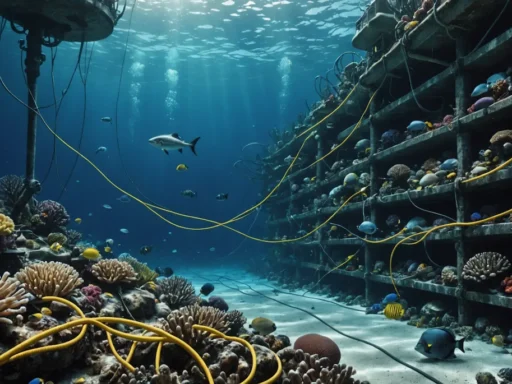The wave isn’t coming—it’s already here. AI is re-engineering every corner of the internet, and at the very foundation of it all are the data centers churning through billions of computations per second. But here’s the catch: traditional infrastructure just can’t keep up. That’s why AI-focused hardware is the game-changer nobody’s ignoring anymore.
From hyperscale campuses drawing more power than some cities to server racks housing million-dollar GPUs, the arms race is on. Microsoft plans to pump $80B into its AI data center blueprint by 2025. Google’s installing geothermal cooling systems as large as small towns. And right in the middle of this hurricane is ZT Systems—a name you probably haven’t read about in flashy headlines but one that’s quietly powering the very backbone of AI compute.
This isn’t about “future-proofing”—it’s about staying alive in a market that’s transforming every quarter. So, let’s dive into how AI hardware, tech acquisitions like ZT Systems, and real-time innovation are reshaping the data center universe—for good.
Understanding The Role Of AI In Data Centers
AI isn’t just some software floating in the cloud. Every prompt, every image generation, every automated customer interaction—it’s all backed by massive computing firepower. We’re talking about models like GPT-4 running on tens of thousands of servers, drawing more watts than a football stadium’s lighting grid.
That kind of load breaks traditional infrastructure.
Data centers built for web traffic and storage suddenly need racks capable of pushing over 10kW each. Cooling becomes an engineering crisis. Power isn’t optional—it’s the battleground.
Why the explosion in demand?
- Model complexity: New algorithms aren’t just smarter—they’re hungrier. Training runs are lasting weeks, not days.
- Real-time services: Personalized responses and AI recommendations burn cycles constantly.
- Business stakes: Everyone from banks to biotech needs in-house inference, not just rented APIs.
Global AI infrastructure spend is set to jump from $120B in 2024 to over $200B by 2028.
Old gear just can’t cut it. This is a shift from traditional “compute-efficient” paradigms to AI-centric architectures. And that brings us to the supplier that’s currently scaling like few others.
ZT Systems’ Role In AI Hardware
ZT Systems isn’t some hot VC-backed newcomer. It’s the quiet juggernaut building behind the curtain for the biggest names in hyperscale computing.
They specialize in custom AI server solutions—think liquid-cooled racks prebuilt for high-density deployments, modular GPU cabinets wired for Nvidia’s latest H100s, and turnkey buildouts that are operational weeks faster than legacy contracts.
And here’s where it gets aggressive:
ZT Systems has gone on an acquisition spree to vertically own more of the AI hardware supply chain. That means fewer choke points, faster deployments, and tighter pricing alignment with its biggest clients—like Microsoft, who’s driving toward 5GW AI campuses through projects like Stargate.
ZT’s value isn’t just box-building.
It’s integration—aligning workloads, power benchmarks, and server architecture directly with the operational goals of its clients. Call it “AI-first hardware orchestration.”
Take Microsoft’s plan: ramp from $53B in 2023 to $80B in 2025 on AI-driven infrastructure. That spend needs a manufacturing partner who can move fast, build custom, and scale globally.
ZT is that partner.
Key AI Hardware Innovations Transforming Data Centers
Pushing AI workloads isn’t about upgrading parts—it’s about rethinking the architecture.
Today’s compute demands rely on a few critical hardware advancements:
| Hardware Innovation | Impact on Data Centers |
|---|---|
| Custom AI Server Design | Makes data centers more task-specific, optimizing for AI workloads |
| Nvidia H100 GPUs | Speeds up deep learning, costing up to $10K per unit—and worth it |
| Liquid Cooling Systems | Manages heat from 10+kW racks more efficiently, improving performance scaling |
Most new builds with AI ambitions are going straight to liquid cooling. It’s no longer a luxury—it’s a necessity. Densities are rising, and air just doesn’t cut it anymore. Add to that innovations like immersion tech that drops thermal boundaries even further, and you’re looking at systems running full tilt without melting down.
ZT is embedding these from the rack level up—building solutions that align with both compute demands and energy budgets.
This isn’t iterative progress. It’s a reset.
Hyperscalers Leading The Charge
The biggest checks are being written by the biggest names. Let’s break it down.
Microsoft? Committed to $80B in AI infrastructure capex by 2025. They’re not just upgrading—they’re building full-blown AI superclusters like Stargate in Texas. Phase 1 alone includes 5 million square feet and a custom H100-powered stack cooled by liquid immersion.
Google? $3B into their US footprint, aiming for 100% renewable matching by next year. That includes pioneering the world’s largest geothermal-powered data center cooling system. Not because it’s cool—but because old cooling solutions now violate their own climate pledges when used at AI scale.
These players aren’t flexing—they’re reacting.
AI shifted the datacenter paradigm from centralized cloud storage to decentralized intelligent processing. They’re racing because infrastructure isn’t just backend anymore—it’s product capacity.
And who’s helping make it all real?
Players like ZT Systems, scaling alongside Microsoft and Google to ensure delivery from silicon to rack to live deployment.
Because in this new chapter of cloud computing, only those who can control hardware at hyperscale will survive the AI storm.
Scaling Infrastructure for Compute Expansion
What happens when your AI model needs more juice than your entire company’s previous IT stack? That’s the reality hyperscalers face every quarter—where staying in the game means scaling compute power at unprecedented speed. The arms race for AI-ready infrastructure isn’t just on; it’s grown teeth.
At the center of this frenzy is Microsoft, throwing down a $20 billion gauntlet in the form of its ambitious “Stargate” project. Partnering with OpenAI and Oracle, this Texas-based mega-campus breaks ground with a planned 5 million square feet in phase one alone. Each building is engineered to run custom Azure H100 GPUs—a Frankenstein blend of Nvidia punch and cloud-native design. This isn’t your standard data hall. It’s hyper-engineered, immersion-cooled, and built to handle workloads hotter than the Texas sun.
The sheer velocity of infrastructure growth is staggering. Microsoft has already sketched out an $80 billion 2025 investment plan, signaling a 51% jump over last year. In practice, that means more power-hungry AI chips, priority power allocations with regional utilities, and unprecedented land grabs for server farms. IDC pegs global AI infrastructure spending at $120 billion in 2024, barreling toward $200 billion-plus by 2028.
What drives this expansion? Training large language models needs compute clusters that make traditional hosting centers look like server closets. Most hyperscalers are rewriting their architectural playbooks from the rack up. Compute expansion isn’t optional—it’s structural. And while most firms quietly scale behind non-disclosure agreements and nondescript fences, Microsoft’s Stargate is the rare example of this magnitude made visible.
Industry-Adopted Solutions for Compute Challenges
Walking into a modern AI data center hits like entering a metal beehive. The hum is louder, the heat more intense, and the cooling far more sophisticated. Greener buzzwords aside, the industry’s race for efficient compute has turned once-optional features into standard hardware mandates.
Liquid cooling is now the norm, not the exception. With power densities spiking to 5-10kW per rack and rising, traditional HVAC systems can’t keep up. Hyperscalers are embracing liquid immersion and rear-door heat exchangers to wrangle heat before it ever hits aisle air. Microsoft’s liquid cooling methods alone have managed to cut their Power Usage Effectiveness (PUE) by 40%.
Google, on the other hand, showcased its Virginia and Indiana expansions with geothermal cooling systems—the largest of their kind. These aren’t PR-friendly “green success stories.” They’re desperation-fueled engineering feats. Heat’s the silent killer in this story. Without these infrastructures, the entire stack collapses.
Faced with spiraling energy bills, some operators are also rewiring logic at the operational level. AI load balancers are now deployed to predict and shift compute-heavy tasks to off-peak hours. Google’s own implementation reduced stranded capacity by 30%, making sure that when chips fire, they produce value—and not just waste.
- Liquid and geothermal cooling are no longer “alternative” options—they’re survival tech.
- AI-specific load balancers help squeeze more out of already-milking power grids.
- Hardware consolidation: Think less servers but smarter ones, driven by performant chip stacking.
It’s not just about smarter cooling. Compute complexity is driving tighter hardware-software integration. Chips are being fused into rack-scale systems that behave more like single organisms than server arrays. The cloud isn’t shrinking—it’s becoming richer, denser, and far more heat-sensitive.
Tech Acquisitions Driving Data Center Innovation
Every rapid evolution in hardware eventually runs into the manufacturing wall. When you need thousands of server-class GPUs delivered yesterday, you don’t just buy from vendors—you acquire them. That’s where ZT Systems walks in.
In the world of AI server architecture, ZT Systems might be the quietest kingmaker. Known for their customization of hyperscale compute platforms, they’ve found cash-hungry gold by designing hardware tuned precisely for AI workloads—think optimized airflow, denser GPU configurations, and faster onboarding cycles. According to recent filings, demand for ZT’s solutions has surged due to their flexible design frameworks tailored for cloud-native AI use cases.
Recent acquisition rumors are swirling because of this strategic leverage. As capital arms like Blackstone and sovereign funds look to secure reliable hardware partners, ZT Systems may soon be at the center of a billion-dollar acquisition sprint. A buyout wouldn’t just be about assets—it’s about securing a future-proof AI server pipeline.
Complementary to ZT’s quiet rise are infrastructure giants like Digital Realty and Blackstone, who are moving entire market segments through joint ventures and strategic positioning. Together, they form the backbone not only of physical compute but the financial scaffolding driving its global expansion.
Tech company acquisitions are no longer about flashy logos or user data—they’re about square footage, chip logistics, and guaranteed megawatts.
Performance Scaling and ROI Metrics
Not every server is built equally—especially in the AI game. Traditional racks can’t keep pace with the energy-hungry, latency-intolerant demands of large AI models. That’s why performance scaling strategies are rewriting how infrastructure teams measure return.
Microsoft’s play isn’t just high capex—it’s smart capex. By deploying AI-optimized servers and immersion cooling, they’ve cut energy waste while increasing output per watt. Meanwhile, Google boasts a 95% faster query response rate for its AI ops since rolling out rebalanced workloads and next-gen GPU clusters.
These aren’t vanity metrics. Companies are designing infrastructure to work around scaling ceilings—limitations in memory bandwidth, thermal output, and chip spacing. AI servers now account for a third of all data center costs, projected to hit 50% by 2028. But operators aren’t taking the hit blindly. Instead, ROI is being benchmarked around tighter feedback loops:
- What’s the energy consumed per AI task completed?
- How fast can new hardware be deployed and integrated?
- What’s the net cost per inference delivered at peak load?
Every dollar is now evaluated through the AI yield lens. If five standard servers do the job of one AI-configured rack at 2x the energy efficiency, the choice isn’t hard. But building the metrics to prove that—that’s the real innovation.
Regional AI Data Center Development
Certain US regions aren’t just data-rich—they’re becoming the load-bearing columns of AI’s infrastructural future. If you’re building for 2040’s compute curve, you’re likely eying Virginia or the Midwest.
In Virginia, Microsoft’s and Google’s data corridor now boasts an 8GW compute capacity—larger than the peak electricity demand of several small countries. Midwestern states like Iowa and Indiana are also seeing over $22 billion in projected AI-related infrastructure rollouts. Flat land, tax breaks, and built-in utilities make these regions irresistible.
But few efforts match the global scale of SoftBank’s $100 billion AI infrastructure fund. The conglomerate’s strategy is sprawling, tapping into hybrid developments across Europe and the APAC region—most notably a 2.5GW corridor from Frankfurt to Paris. Backed by Blackstone and Digital Realty, these projects aren’t just compute clusters—they’re strategic energy and fiber node alignments reshaping the future of transcontinental data flow.
Where power scarcity looms, modular energy strategies are also in play. Small Modular Reactors (SMRs) are being evaluated alongside traditional renewables to ensure long-term availability. While most nuclear discourse remains politically volatile, data center operators are quietly doubling down on SMR prototypes, viewing them as critical to keep AI clusters electrically alive in the coming decades.
AI doesn’t live in the cloud. It lives in dirt—on 100-acre campuses, wired to transformers, cooled by aquifers, and waiting for wave after wave of inference. Know the geography, and you’ll know where the future flows.
The Future of AI Hardware Scaling
Look around—AI isn’t slowing down. Every breakout model, every new chatbot, every autonomous claim is backed by one uncomfortable truth: you need insane amounts of compute to build and run these things. The server room is the new war room, and it’s where tomorrow’s advantages will be won—or lost.
Nvidia’s H100s aren’t just hot in resale markets; they’re literally hot. These $10K GPUs push rack densities to a point where room temperature isn’t enough. That’s why liquid cooling is the new normal in hyperscaler builds. No surprise, Microsoft’s Azure clusters are shifting to immersion techniques in collaboration with OpenAI and Oracle—remember their $20B Stargate project? That wasn’t charity.
The rise of custom chips like Alibaba’s Yitian 710 shows where we’re headed. It’s not just faster execution—it’s efficiency, integration, and cost per watt. These aren’t side upgrades. They mean 22% less power draw during heavy AI workloads, which compounds across thousands of racks. And this isn’t just some minor ClickUp dashboard optimization. We’re talking hyperscale power plays.
It’s why the number to watch is global infrastructure spend. IDC projects $200B+ by 2028. That’s where the big boys—Microsoft, Google, SoftBank—are placing their chips, literally and figuratively.
Challenges Impacting Data Center Strategy
The speed of innovation isn’t the problem. It’s the gaps that appear under pressure—power, cost, and people.
Let’s talk power. A single AI-centric data campus is eating up 200MW like it’s Geek Squad on free sample day. New projects are venturing toward 1GW+ draw limits. Transmission line approval? You’re waiting four years, if you’re lucky. Meanwhile, JLL notes transformer delays sitting at a cool 36 weeks minimum. You think OpenAI’s next release waits for permits?
Then there’s the cost curve. AI servers aren’t getting cheaper—they’re becoming the centerpiece. Servers now eat up 33% of total data center spend, and by 2028, that number is climbing past 50%. Sure, storage is dropping 18% YoY, but that means your tensors are easier to store, not faster to compute. Compute cost is becoming a moat. If your capex plan doesn’t factor that in, you’re swimming naked.
People? Good luck. The tech is outpacing workforce training. Liquid-cooled racks. Immersive GPU arrays. SMR-based microgrids. Who’s building these? Which community college offers a degree in “keeping your AI servers from frying the grid”? We need certified hardware technicians with nuclear literacy—not just kids who read ChatGPT prompts on Reddit.
Key Investments Shaping AI Equipment for the Future
This is where ZT Systems enters the chat.
The ZT Systems acquisition approach is laser-focused: don’t just build servers—build the stack with hyperscalers in mind. Think server to silicon, all optimized for the next trillion-token model. Google, Microsoft, and anyone else managing GPU fleets the size of small cities are now partnering with ODMs (Original Design Manufacturers) like ZT, because off-the-shelf just doesn’t cut it.
As these hyperscalers scale beyond 10B+ parameter models, the need isn’t just more hardware—it’s smarter systems. You need integrated compute blocks that scale with usage, not just increase electricity bills. Immersion, SMRs, AI-aware routing—ZT Systems doesn’t just provide blades; they offer scale intelligence.
And the ZT Systems acquisition trend isn’t isolated. It reflects a bigger shift—AI is now hardware-constrained. OpenAI can’t ship GPT-6 until Azure ramps capacity. That means control of the supply chain isn’t a nice-to-have, it’s your moat.
Expect more M&A in this space. Whoever controls compute at zero marginal cost (or close) wins the inference war.
Calls to Action for Stakeholders
Let’s make it plain. AI hardware is now the new oilfield. Everyone touching the future needs skin in this game.
For companies:
- Start building not just for latency, but efficiency. If your AI system guzzles more power than a suburban block, you better be offsetting that with real decarb practices—no greenwashing.
- Adopt hardware-aware AI strategies. Not every model needs full precision. Compression methods, edge deployment, and liquid cooling aren’t luxuries—they’re survival tools in a market inching toward thermodynamic crisis.
For investors:
Look beyond Nvidia stickers. Hyperscale partnerships with manufacturers like ZT Systems—that’s the action. Track hardware supply chains like you track SaaS MRR. The Fortune 10 will ride whoever unlocks hardware provisioning without choking on logistics.
For policymakers:
Get your thumbs out of the approval pipeline. If a clean energy project takes longer to approve than an AI model takes to outlearn its feedback loop, we have a problem. Build frameworks that encourage:
– Renewable-powered campuses
– SMR integration in mega campuses
– AI hardware disclosure laws—transparency enforced, not performative
The stakes? Billion-dollar black boxes that suck power from strained grids, answer only to shareholders, and leave local communities with the environmental hangover.
ZT Systems acquisition isn’t just a business headline. It’s a warning shot of who’s positioning to eat the future. If you build AI without owning—even partially—the hardware pipeline, you’re betting on sandcastles in a flood.


